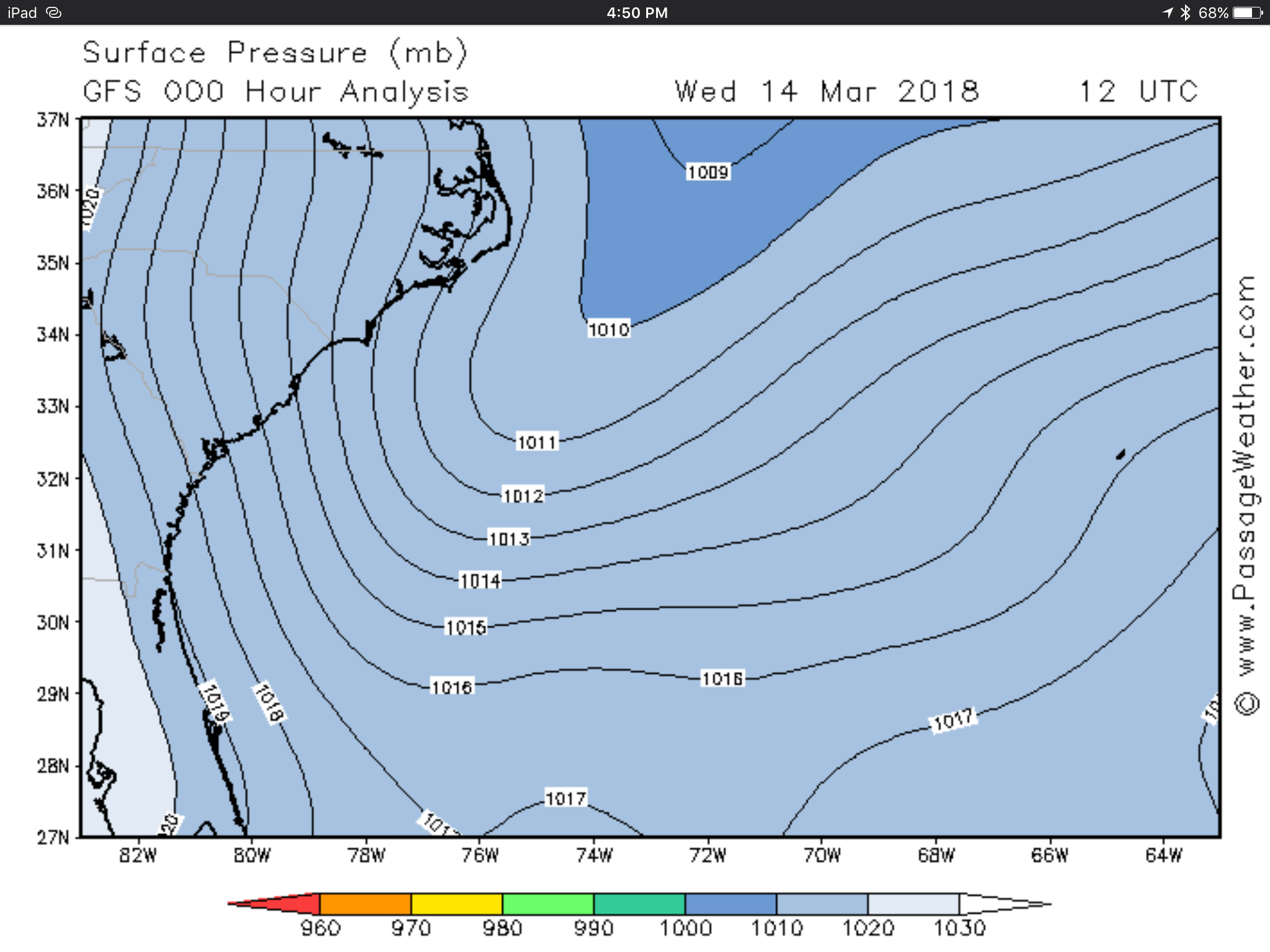We all know the joke, how can the meteorologist be wrong so often and still keep their job?! They say it will rain and it's sunny, they say it will be sunny and it pours! Out on the ocean, it's no different.
We have friends on shore giving us weather information for our area as well as downloading Weather Fax broadcasts. The information was a total shot in the dark.
The wind speeds were always off, air pressures were usually close but still off, but the wind direction was pretty spot on.
My favorite was when we were stuck in the doldrums and our friends on shore asked why we weren't moving. "The weather app says you should have 15 knots of wind" yet we were becalmed for a week!
After a while, I stopped downloading the weather faxes too. It seemed that I could get a more accurate weather forecast by asking a passing seagull.
When we left Bermuda for the Azores, I didn't even bother to check weather forecasts. I checked to make sure no hurricanes were coming and then went to sea. Our friends kept telling us to head north of the rhumb line to avoid a massive high pressure system that would have no wind, yet day after day, the clouds said we would have wind and wind we would have. Winds varied between 20 and 30 knots for the entire week, while the forecast said we would have winds of under 10 knots where we were.
A week into our voyage, we did turn north because the clouds of a high pressure system appeared in the far off distance. I did not fear losing wind because I keep us surrounded by clouds that have wind. Storms, squalls, and good winds can all be seen by looking at the sky and reading the clouds.
This is how you get your forecast for what is happening now where you are. If you know how to read the clouds, you can even get hints about what's coming tomorrow and the next day! No data or internet connection required, just a barometer and a weather eye to keep you in good winds as you cross the ocean.






